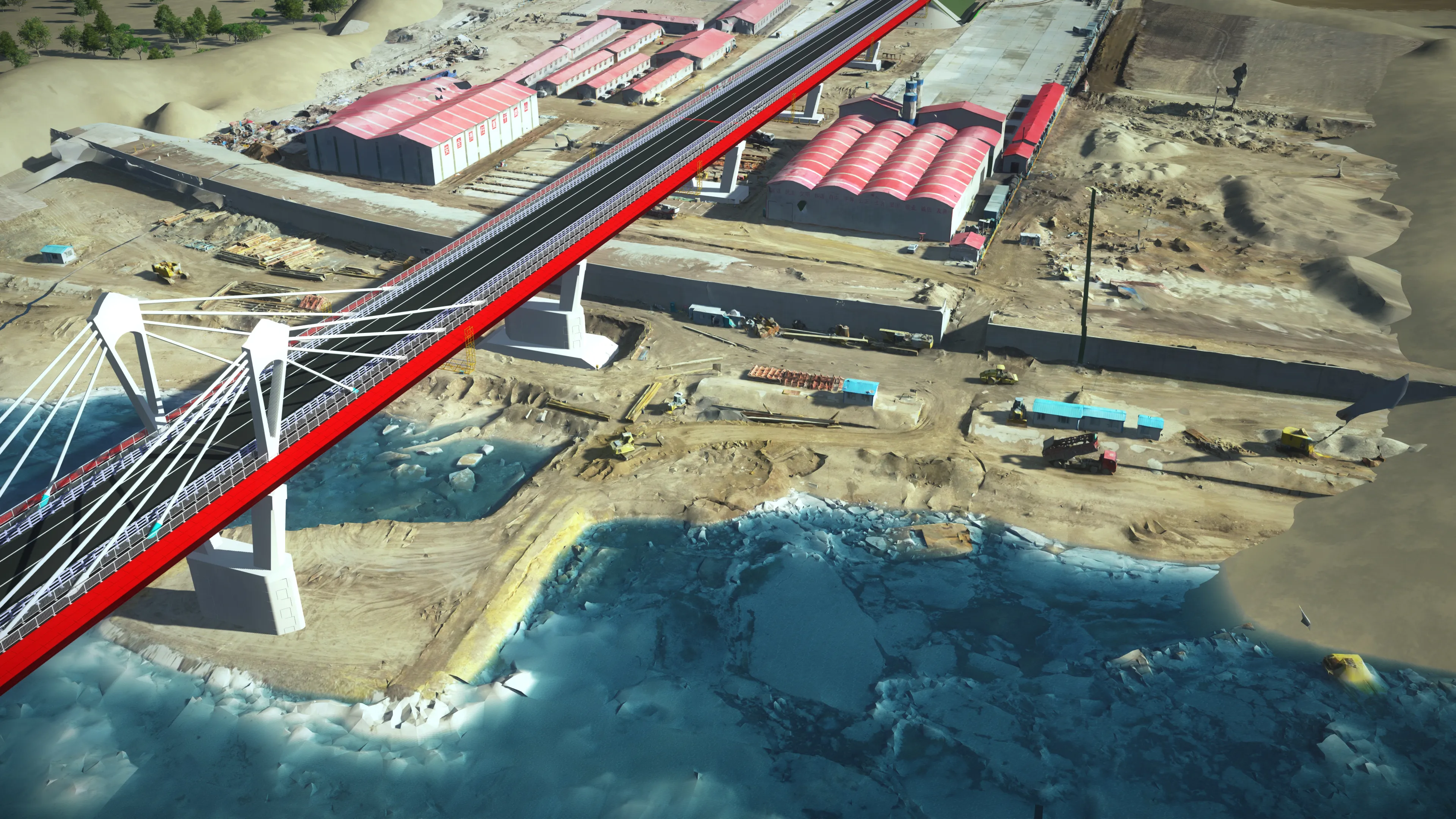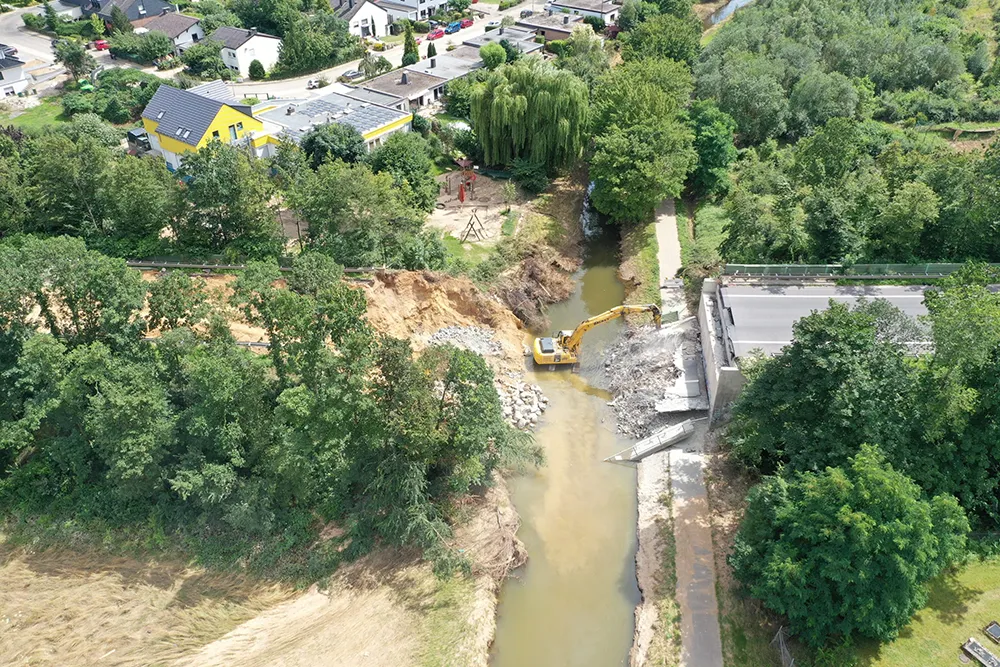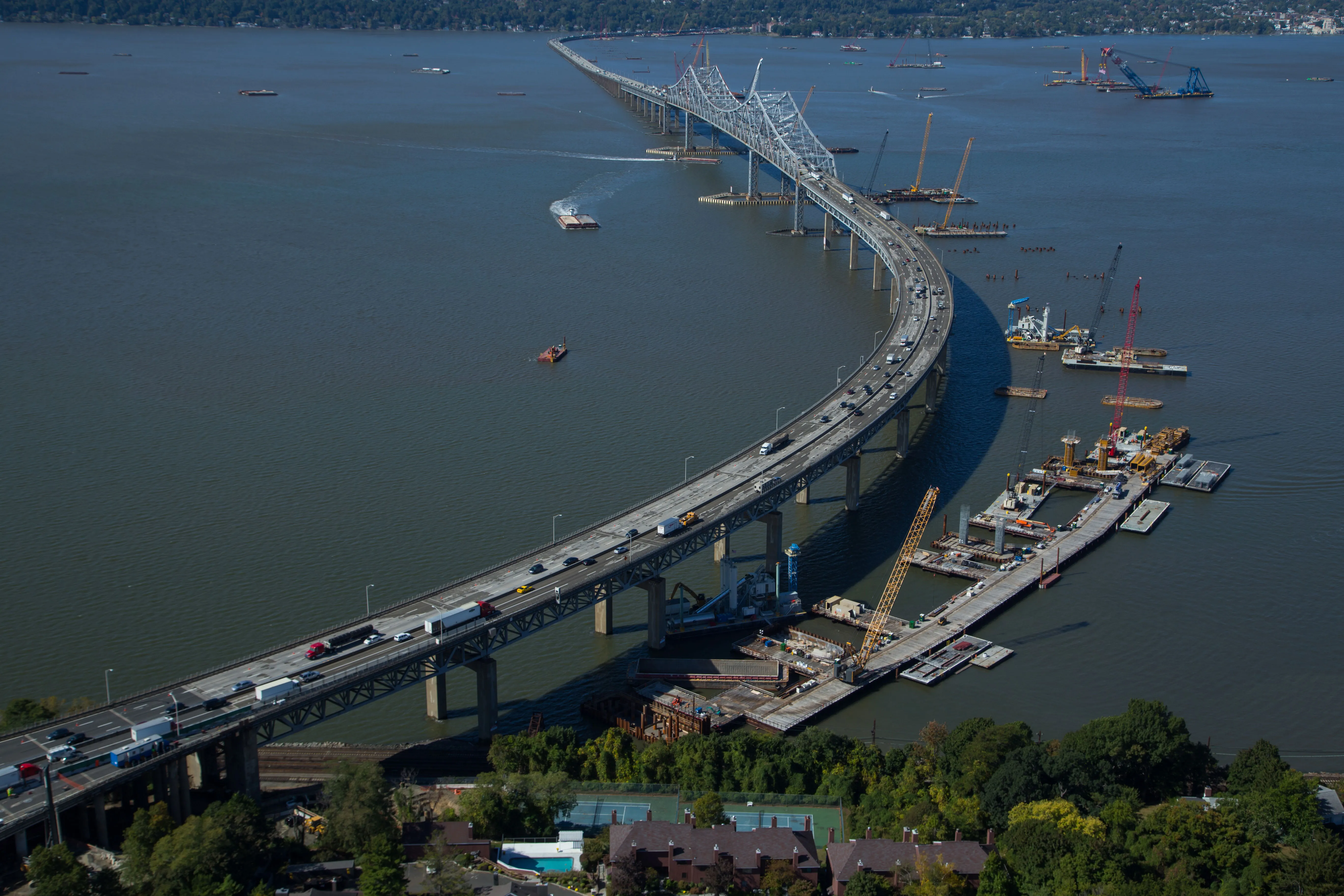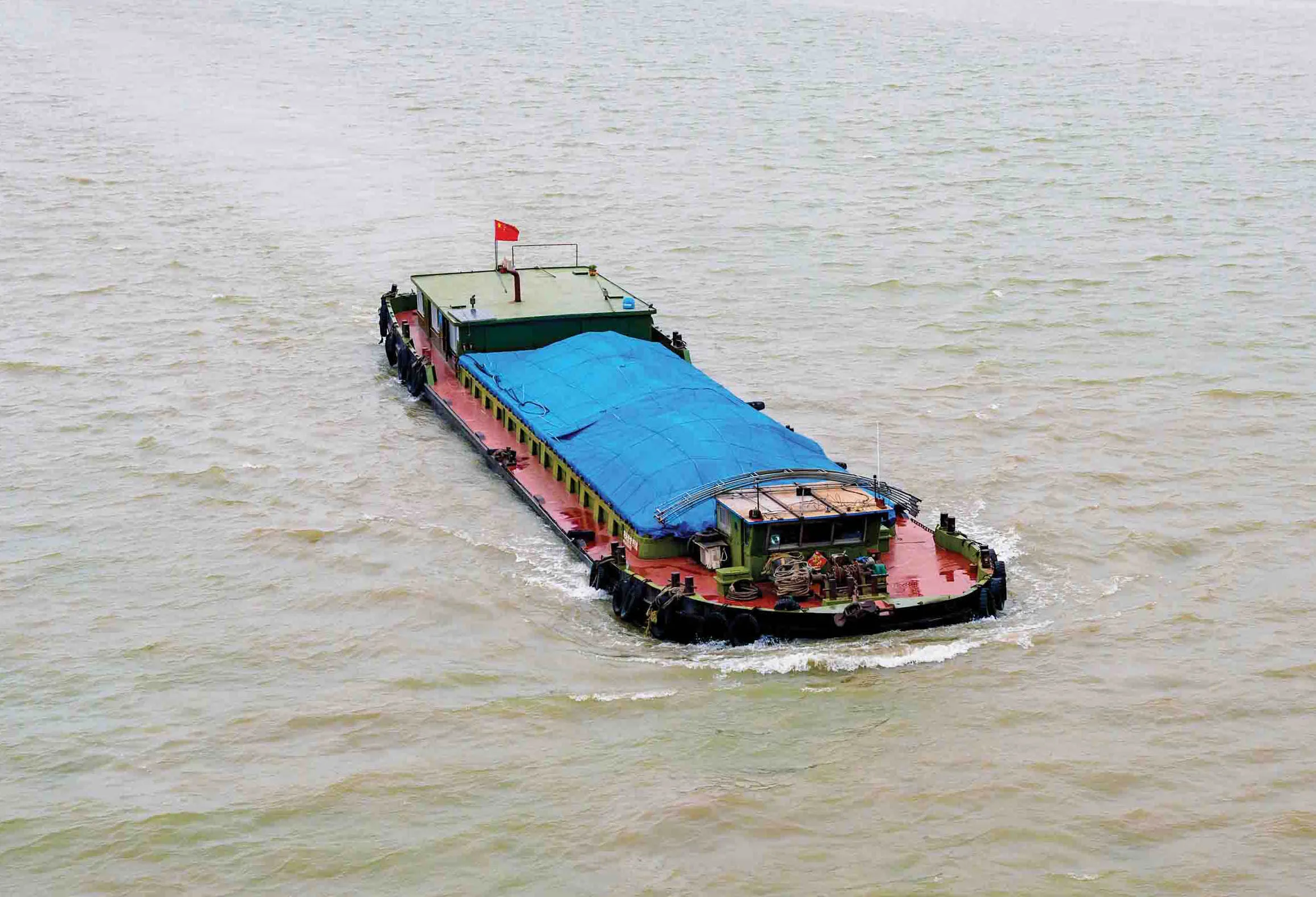
A new bridge spanning what China calls the Heilongjiang River and which is known as the Amur River in Russia, is a clear sign of an important international accord between the two countries. Discussions over the bridge project were first started between China and Russia in the 1980s, with both nations seeing many changes in leadership since that time. But while the political discussions between Russia and China over the project have been protracted, the opening of the new link has been long awaited by the residents of both cities. Until now, driving between Heihe and Blagoveshchensk by road has entailed a journey of around 3,500km. The new Amur River crossing will increase cargo transport between Russia and China by a factor of 10, developing trade beyond the port cities of Heihe, China and Vladivostok, Primorsky Krai, Russia. Combined with the new highway connections, the completed bridge will provide a vital link in the China-Mongolia-Russia Economic Corridor and will also form part of the Silk Road Economic Belt.
According to Long Jian Road & Bridge, the Chinese firm charged with designing the structure as well as building the Chinese portion of the link, the new route is a major step for both China and Russia and will help to boost trade. “This is the first modern bridge between China and Russia,” said Xuyuan Liang, director, R & D Centre, Long Jian Road & Bridge. “It took 28 years of discussions between 1988 and 2015.”
And the bridge project has also won international recognition, winning the bridge category at the construction software awards held by
Part of the Heilongjiang Province Construction Group, Long Jian Road & Bridge is a state-owned enterprise with expertise in road and bridge construction projects. The contractor chose the incremental launching method for construction of the bridge, which is a low tower, cable-stayed structure. This method was selected as it helps to reduce construction time and is also a comparatively low-cost solution. In addition, this method saves on space and helps to reduce disturbance in environmentally sensitive areas. The cable-stayed design itself was selected because it best suited the requirements of the client, being stiff and stable. According to Liang, “We’ve used a composite steel and concrete beam.”
This new structure forms a small but highly significant component for China’s massive Belt & Road infrastructure programme, aimed at improving transport links for China as well as its neighbours in a bid to boost trade and economic development. For China’s depressed but heavily populated Heilongjiang Province in particular, the new bridge is expected to bring new jobs and businesses to the area. North of the river in Russia, the bridge will also bring jobs to an area that has been remote and underpopulated.
The Heilongjiang River Road project is of such importance politically that it was signed personally by Chinese and Russian heads of state, President Xi and President Putin. The two leaders put their signatures on the protocol for construction of the bridge and highway connection in September 2015.
One of the reasons for the length of the discussions was the sensitivity over the joint history of this area. While diplomatic relations may have thawed, fuelled by a mutual recognition of the need to develop the neighbouring territories, the political negotiations were lengthy and complex.
The new Heilongjiang River Road Bridge project is costing US$379.15 million (2.4 billion RMB) to construct and will connect the Chanfatun area of Heihe in China, with the city of Blagoveshchensk’s Canikulgan area, in Russia. The project is of importance as this will be the first direct highway connection for the trade route between North Eastern China and Far East Russia. Until now, transport has relied on ferries crossing the Amur River and as a result the inhabitants of Heihe and Blagoveshchensk have had fairly little communication, despite the two cities being a mere 730m apart at their closest point.
Rails as well as roads
The new road bridge also comes at a time when a new rail connection is being built between Russia and China, only a short distance away. The 2.2km rail bridge will connect Nizhneleninskoye in the Jewish Autonomous Oblast with Tongjiang in China’s Heilongjiang Province, with the project also including track to connect with the rail networks in either country. Around 3 million tonnes/year of goods will cross the rail bridge, along with 1.5 million passengers/year, according to predictions. Much of the material the rail link will carry will be iron ore being transported from Russia’s Kimkan surface mine operated by IRC, to a smelting plant in China. This will allow Russia to capitalise on its substantial mineral reserves, while giving China better access to a source of iron ore. Meanwhile China will also be able to transport finished steel to Russia more easily, and again at much lower cost. The rail line will make a huge reduction in time and transport costs, cutting the journey from 1,000km to just 233km.
Construction of the Chinese portion of the bridge was completed in mid-2016 although the work on the Russian side has been subject to delays. The Russian portion of the bridge is now expected to be complete by mid-2018 however. Discussions over the construction of the rail bridge date back to 2007 to meet growing transport needs between Russian and China. Talks between the two nations took some years, with Russian and China then setting up a joint company to build the structure in the third quarter of 2014.
Construction started in late December 2016 and the two-lane, cable-stayed bridge is due to open to traffic in October 2019. The new road is expected to help revitalise a depressed area of China in much need of an economic boost. Similarly for Russia, trade with its neighbour will assist economic growth in a hitherto depressed area.
As the bridge spans the border of the two countries, the project management relationship is more complex.
The project includes building some 20km of roads, of which 13.5km are in Russia and the remaining 6.5km are in China. The bridge itself measures 1.284km long by 18.26m wide, and once complete it will be joint-owned by the local authorities in both countries.
However, as Long Jian Road & Bridge has explained, the project has faced some serious challenges, not least of which is the extreme temperature variation between winter and summer. During winter temperatures drop as low as -30°C, while in summer they can be as high as 30°C. The ferociously cold winters and often heavy snowfalls that occur were understood as having the potential to halt works temporarily right from the start of the planning process and had to be factored into the schedule as a result. The weather means that the river features ice flows in winter, with further challenges posed by the limited channel width, and a protected river basin.
The project is located in the upper reaches of Heilongjiang River in the Heihe River basin. The environmental protection requirements are high as this area features the Taigarin Vegetation Belt, which is rich in species. The fisheries in this area are abundant and there are around 100 species of fish in the lower reaches and about 60 species in the upper reaches of the river.
The prevention and control of water pollution in the Heihe River basin are related to the sustainable development of the region and have been a factor in Sino-Russian relations and national security. In recent years, Russia has made demands for improving water quality, with China now taking action to clean up its industries in the area.
Given the extremes of the weather between seasons as well as the strict environmental requirements, the three-year construction schedule was an ambitious move for Long Jian Road & Bridge. To help the firm achieve its target, it has opted to use the latest building information modelling (BIM) approach, based around the use of the sophisticated ProjectWise software package from Bentley Systems. Using the various Bentley tools has delivered major gains in efficiency, with a 620m2 reduction in the construction site itself while reducing errors and the need for reworking. Overall, the team has so far saved a total of 40 working days to date, while the time needed for construction coordination and inspection has been cut by 30%. And by implementing BIM, Long Jian Road & Bridge says it was able to achieve a gain in project management efficiency of 25%.
According to the firm, it employed the 3D parametric modelling capabilities of Bentley’s OpenBridge Modeler software, which allowed it to attain the necessary accuracy in designing the bridge deck. And the integration between OpenBridge Modeler and OpenRoads enabled precise positioning of the substructure and customisation of more than 60 structures. This allowed the team to boost efficiency by 50%, compared to traditional methods, by implementing parametric modelling techniques. Meanwhile finite element analysis with RM Bridge was used to simulate the pile foundations, main beams, and other structures. This mean that the firm could optimise structural strength, rigidity, and stability. And modelling the steel structures and structural reinforcements with ProStructures helped to reduce material waste and construction rework, saving 30tonnes of material at a cost of around $15,830. At the same time, construction coordination and inspection time has been lowered by 30% due to the use of the Bentley applications.
By using the Bentley packages, Long Jian Road & Bridge has managed to trim down material waste by 1%, while using machinery and labour 15 times more efficiently. The firm said it has also limited the cost of schedule deviations to under $79,124 (500,000 RMB). The firm was also able to position the bridge superstructure with a high degree of accuracy, as well as positioning 60 associated structures. Long Jian Road & Bridge was able to carry out these tasks and customise the bridge superstructure and associated structures using the OpenBridge Modeler package. Meanwhile, carrying out reality modelling using the ContextCapture tool meant that overall land use for the project could be reduced by 770m2. This was an important point as it helped to minimise the impact to the environmentally sensitive river basin area.
Even though the winter weather was seen as a challenge, it has added to the difficulties for the team. Liang said, “The environment is very harsh and the winter is very cold. We have needed to consider operations in winter in particular. Working on solid ice poses the biggest challenge for us.”
The massive temperature range for the bridge has had to be factored into its design. “There is 10-20cm of expansion and contraction in the elements because of the temperature variance,” Liang said.
A tangled history
The bridge’s lengthy approval process has been affected by the sensitivities over the difficult history of the area in which it will be built. A triumphal arch in the Russian city of Blagoveshchensk provides an uncomfortable reminder of one of these sensitive issues. It is said that time heals scars, but Russia’s seizing of the city of Blagoveshchensk saw the border then being forced back to the Heilongjiang River/Amur River. Although the river has been recognised as the border in the hundred-plus years that have passed since, it has remained a source of discomfort, with the different cultural perspectives of the Chinese and Russians also playing a role. That China’s President Xi and Russia’s President Putin personally signed the deal to build the bridge is of immense significance. The project is quite literally building a bridge between the nations.








